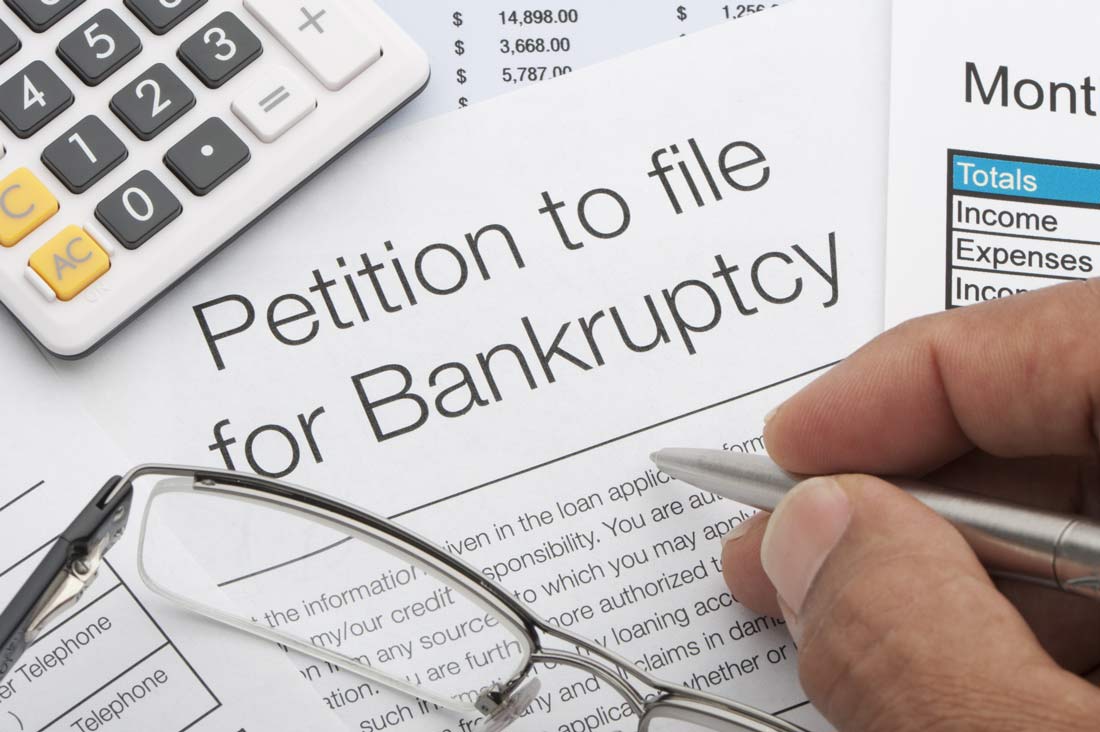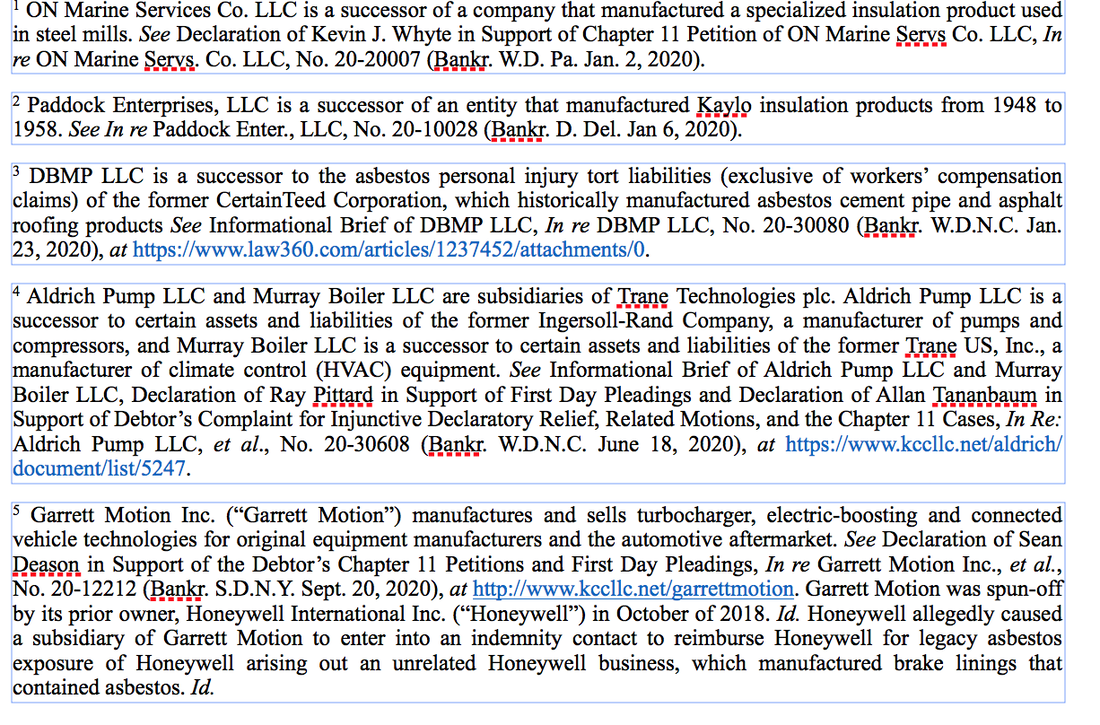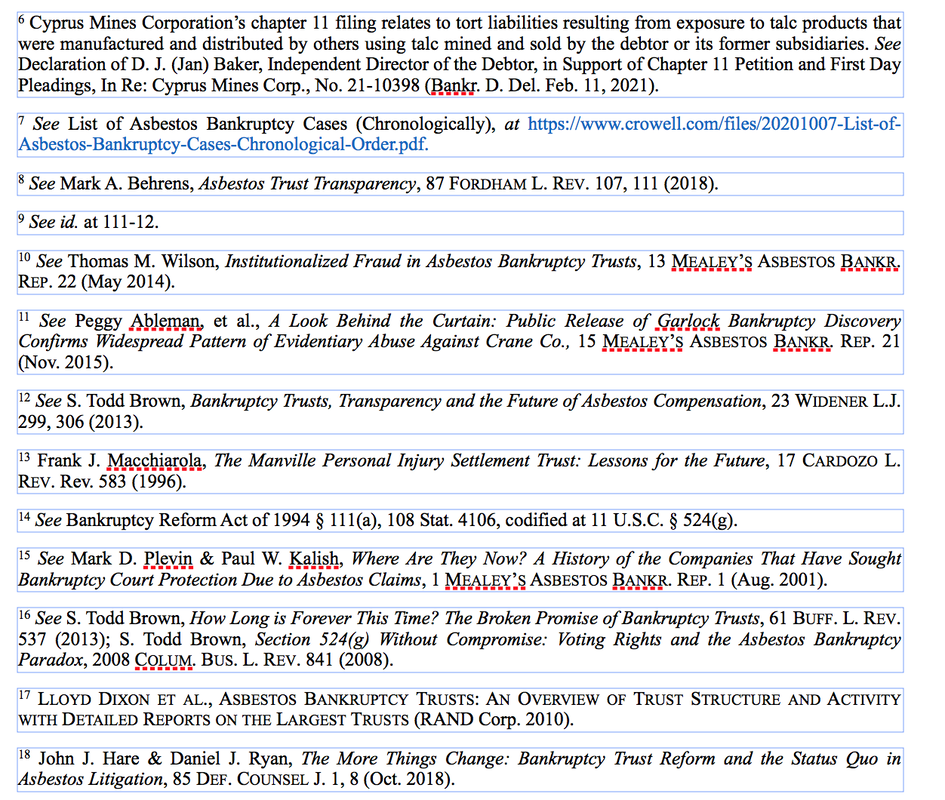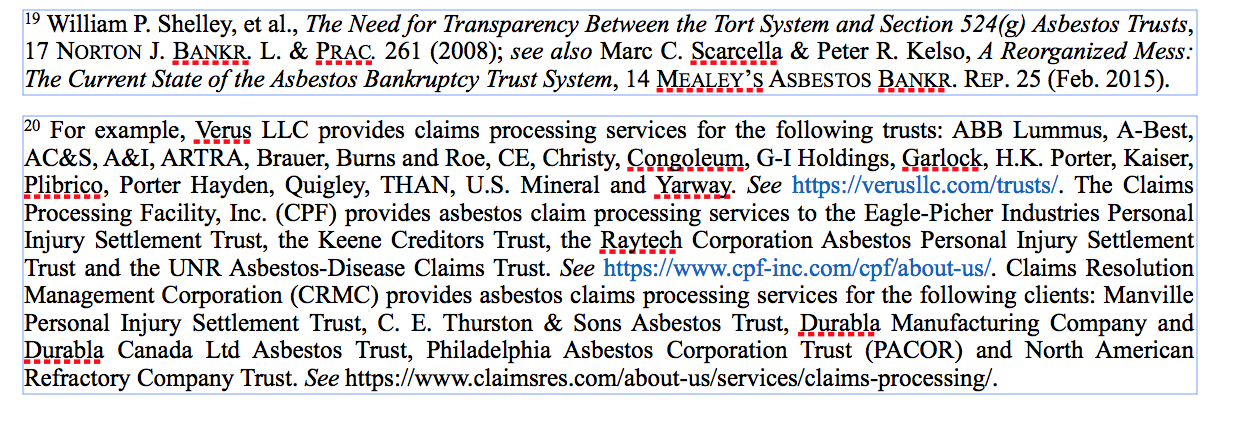The authors of this guest essay, Evelyn Fletcher Davis and William T. Wood, III are partners in the Atlanta office of Hawkins Parnell & Young, LLP, where their practices focus on asbestos litigation defense. This three-part guest article examines the evolution of the bankruptcy trust system (Part I), how control over the trust system by plaintiffs’ counsel has resulted in unfair allocations of responsibility, double recoveries and excessive costs (Part II), and offers practical advice to defense counsel to fix the disconnect between the tort and trust systems (Part III).
Many of the companies that have declared bankruptcy due, at least in part, to asbestos-related liabilities have created trusts to pay for alleged harms caused by exposure to their products. Approximately sixty bankruptcy trusts are presently in operation, and claimants today typically file claims with numerous trusts for alleged harms caused by the bankrupt companies’ asbestos products. Because of the way the bankruptcy trusts are set up and operate—primarily by attorneys who represent asbestos plaintiffs—those same attorneys have been able to litigate cases against new or formerly peripheral asbestos defendants without accounting for the trust entities’ responsibility for causing their clients’ injuries or the amounts their clients recover from the trusts.
This has resulted in duplicative recoveries for plaintiffs—and their attorneys—and forces the current generation of asbestos defendants to bear costs far out of proportion to their share of responsibility. While some jurisdictions have acted to address those abuses of the tort system, they persist in most states, draining the resources of defendants and forcing some companies to file bankruptcy.
I. How the Bankruptcy Trust System Evolved
Back in the 1980s, asbestos manufacturing giant Johns-Manville Corporation entered bankruptcy and pioneered what was then a “radical new use of bankruptcy law.” Manville sought to establish and fund a qualified settlement trust that would pay both current claimants and also future asbestos claimants that were exposed to Manville products and may seek compensation for their injuries over the next several decades. In 1994, Congress amended Section 524 of the Bankruptcy Code to add a new subsection that offered the “Manville solution” to other companies similarly burdened with asbestos liabilities. By 2002, virtually every major producer of asbestos products had availed itself of that opportunity.
While the trust mechanism established by Bankruptcy Code § 524(g), on its face, may appear to envision an objectively neutral process of compensating injured claimants, the implementation of the statute has been anything but neutral. A landmark study of asbestos bankruptcy trusts by RAND showed that a disproportionate number of key trust personnel positions were filled by plaintiff attorneys. A more recent analysis revealed that the top five asbestos plaintiff firms had “significantly increased” their membership on Trust Advisory Committees since the RAND study. As one commentator explains:
The dynamics of the bankruptcy process tend to lead to trust agreements and TDPs [Trust Distribution Procedures] that are largely written by counsel for the asbestos claimants themselves. After the debtor and competing creditor constituencies reach agreement with the asbestos creditors on the broad terms of the division of the assets of the debtor’s financial estate, there is little incentive for them to become involved in deciding how asbestos claimants choose to divide their own piece of the economic pie. * * *
The asbestos claimants and their contingency-fee attorneys have a strong incentive to design “user-friendly” TDPs that easily dispense funds in order to permit claimants to withdraw as much money as possible from the trusts as quickly as possible. Moreover, the selection of the trustees and members of the trust advisory committees (TACs) that oversee the operation of the trusts is heavily influenced, if not controlled outright, by counsel for the asbestos claimants.
In some instances, multiple bankruptcy trusts are administered by the same claims processing company, and, as a result, this consolidation has streamlined the process of submitting claims to multiple trusts at the same time. In addition, most bankruptcy trusts do not limit the ability of plaintiffs’ attorneys to recoup their normal contingency fee percentage from trust payments despite the administrative nature of the claim submission process.
Summary of Part I and Preview of Part II:
More than 130 companies have filed for bankruptcy due to asbestos-related liabilities. Bankruptcy trusts are primarily set up and operated by attorneys who represent asbestos plaintiffs. Part II will look at how the growing involvement of plaintiffs’ counsel has resulted in unfair allocations of responsibility, double recoveries and excessive costs.





 RSS Feed
RSS Feed